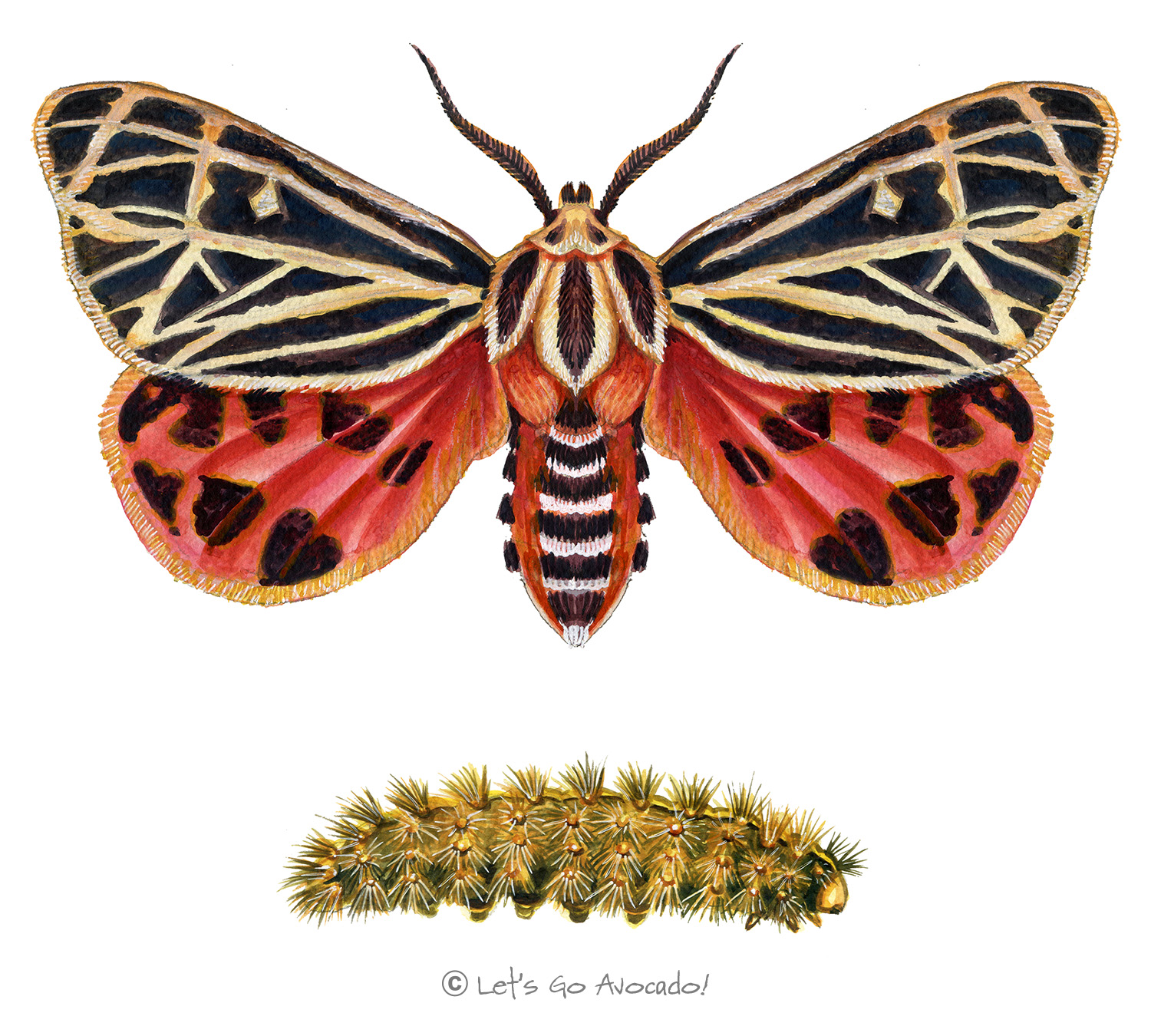

Virgin Tiger Moth
Yellow Woolly Bear
Grammia virgo
This page may contain affiliate links.
Read our disclosure and privacy policy here.
The Virgin Tiger Moth is a nocturnalAnimals that are active during the night and rest during the day. Beavers are primarily nocturnal, doing most of their work at night. Learn More insect, belonging to the vast family of tiger moths. As with many moths in this family, it exhibits striking color patterns that serve as a warning to potential predators.
Virgin Tiger Moth
Common Name
Virgin Tiger Moth
Other Names
Yellow Woolly Bear
Latin Name
Grammia virgo
Distribution
The Virgin Tiger Moth can be found throughout much of North America.
Appearance
The adult moths are typically white with a smattering of black dots or splotches across the wings. The caterpillar is densely covered with bristles and varies in color but is commonly yellow or orange with black bands, hence the “Yellow Woolly Bear” moniker.
Size
Adult moths typically have a wingspan ranging from 5 to 8 cm. The caterpillar can reach lengths of up to about 5 cm.
Habitat
They can be found in various habitats, including forests, meadows, grasslands, and suburban areas.
Diet
The caterpillars feed on a variety of plants including dandelions, plantains, and other low-growing herbs. As moths, they are nocturnal and are attracted more to lights than to flowers. However, they might feed on the nectar of various nocturnal blooming plants.
Lifecycle
The lifecycle of the Virgin Tiger Moth follows the standard for Lepidoptera: egg → caterpillar (larva) → pupa (inside a cocoon) → adult moth.
Defense Mechanisms
The dense bristles or setae on the caterpillar can be irritating to potential predators. Additionally, its bright coloration serves as aposematic (warning) coloration, signaling to predators that it might be unpalatable or harmful. The adult moth’s bright and contrasting patterns of white with black dots serve as a warning coloration, indicating to predators that they might be distasteful or toxic. This is another example of aposematic coloration.
Ecological Importance
Virgin Tiger Moths, like other insects, play a role in the ecosystemAn ecosystem is a community of living organisms, like insects and birds, and non-living components, like water and rocks, that interact with each other in a specific area. Learn More as pollinators and as a food source for various predators. The caterpillars help in plant control, feeding on various plants that might otherwise grow unchecked.
ConservationThe act of protecting and preserving natural resources and the environment. Conservation efforts are important to protect beavers and their habitats. Learn More Status
The Virgin Tiger Moth isn’t known to be threatened or endangered and is relatively common in its range.

There’s a lot to explore right where we are, in our own neighborhoods and backyards! Join us while we get off the couch and explore the everyday wonders of nature, science, space, engineering, art, and anything else we stumble upon during on our adventures.







